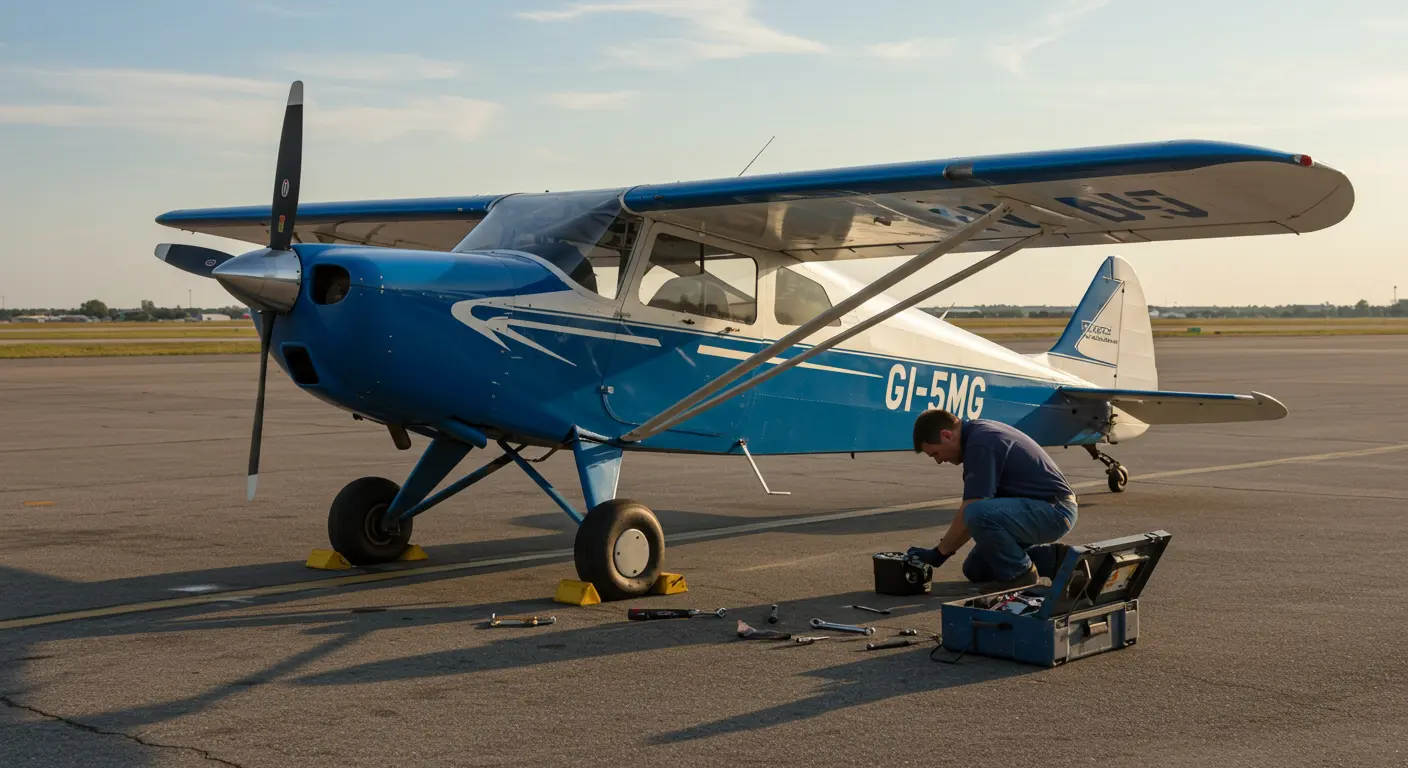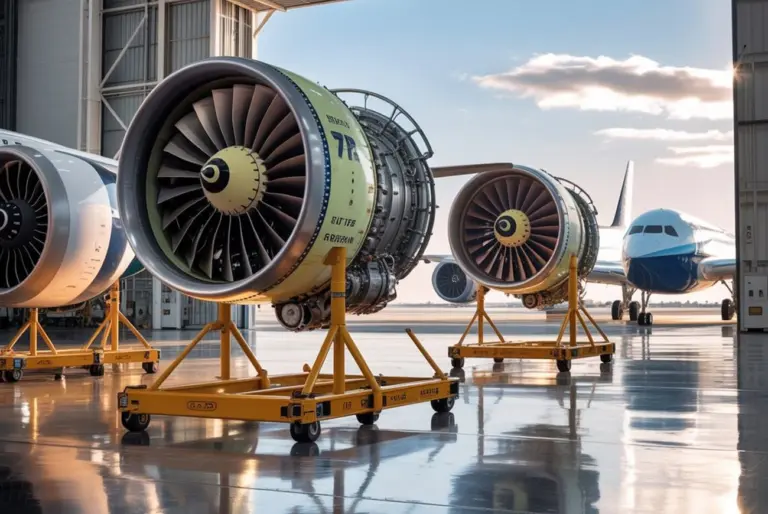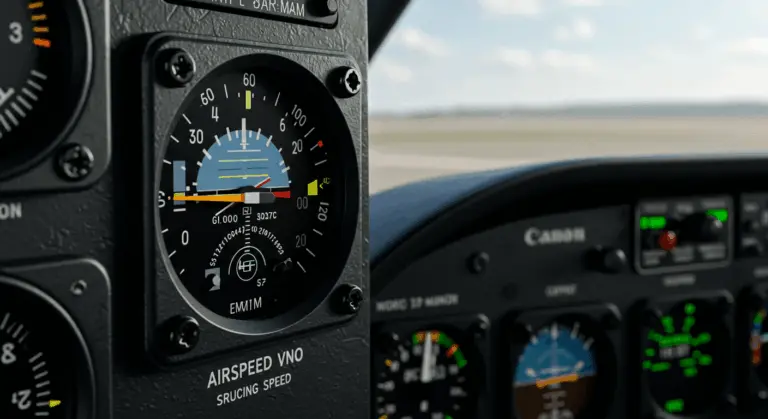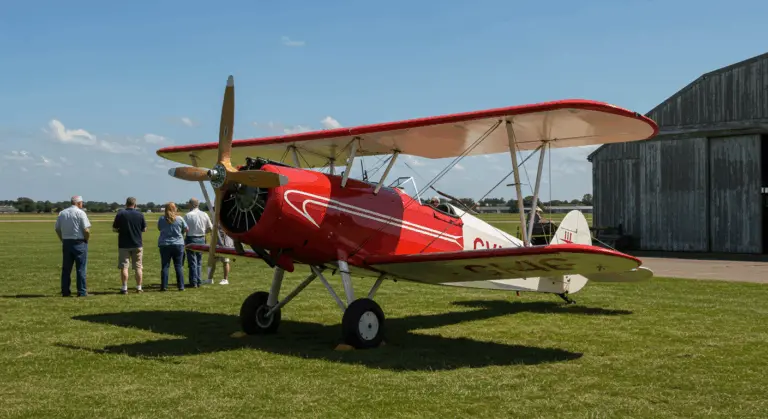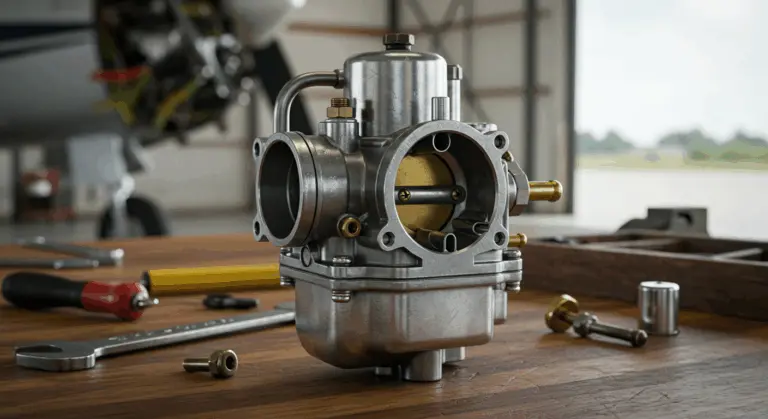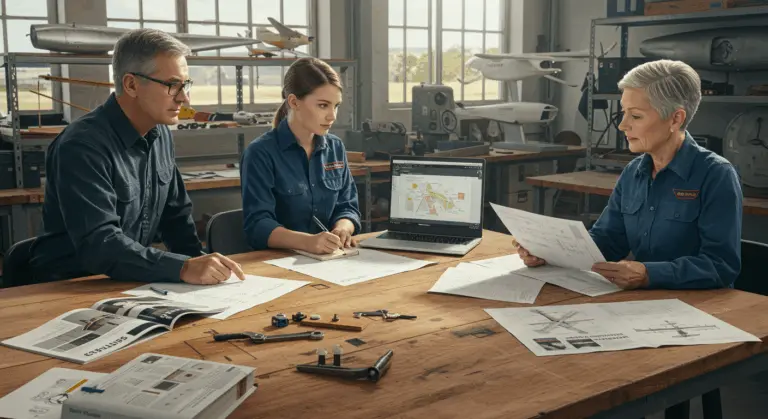Common Problems with the Bellanca Super Viking Aircraft
Overview of the Blanca Super Viking
The Blanca Super Viking stands as a remarkable high-performance, single-engine aircraft that emerged from the innovative decades of the 1960s and 1970s. This exceptional machine combines traditional craftsmanship—rooted in the visionary designs of pioneer Giuseppe Blanca—with performance capabilities that continue to turn heads today.
The aircraft’s distinguishing feature is its distinctive construction: featuring a fabric-covered tubular steel fuselage and spruce wings with a plywood skin. This thoughtful engineering approach directly influences both its impressive performance characteristics and its specialized maintenance requirements. A visually distinctive feature is its oversized vertical fin, a hallmark inherited from its Cruiser predecessor.
Drawing power from a Continental IO-520-K engine, the Super Viking transforms into a formidable cross-country traveler with a 75-gallon fuel capacity and a useful load approaching 1,000 pounds. Many have been upgraded with modern avionics like GPS, engine monitors, and autopilots, keeping them relevant in contemporary airspace.
Common Issues Faced by Blanca Super Viking Owners
Prospective buyers and current owners of the Blanca Super Viking should understand several recurring challenges that define the ownership experience. These concerns range from operational intricacies to maintenance demands that set this aircraft apart from its more conventional contemporaries of the era.
Three primary areas consistently challenge operators:
-
Fuel Management: The complex fuel system requires meticulous attention.
-
Handling Characteristics: The aircraft’s sensitive controls and clean aerodynamics demand specific pilot techniques.
-
Specialized Maintenance: The unique wood, fabric, and steel construction requires experienced technicians.
Fuel Management Challenges
The aircraft’s intricate fuel system creates operational complexity, featuring multiple tanks and selectors that require careful monitoring. Particularly troublesome are the unreliable fuel gauges found in older models—a critical safety concern that forces pilots into meticulous flight planning to compensate for this uncertainty.
This complex system of valves and selection points often bewilders pilots transitioning from simpler aircraft —a confusion that has unfortunately contributed to fuel exhaustion incidents. Proper training and regular system checks are essential to prevent these situations.
An increasingly pressing concern involves fuel compatibility with the industry’s transition to unleaded alternatives. This transition means owners to monitor new fuel requirements, performance implications, and regulatory approvals to ensure safety, compliance, and engine longevity.
Handling Characteristics and Control Issues
While the Super Viking’s exceptionally sensitive controls deliver outstanding responsiveness, they demand a delicate, measured touch, particularly during configuration changes and landing. This characteristic often proves daunting for pilots transitioning to the aircraft without proper training.
Managing the aircraft’s remarkably clean aerodynamic profile during descents presents a significant challenge, as its low-drag design can lead to excessive speed. The situation becomes more complex due to strict operational constraints: flaps cannot be deployed above 120 mph, and landing gear extension is restricted below 160 mph, requiring careful descent planning.
Pilots frequently encounter control harmony challenges when slowing for landing, since this aircraft requires precise speed control and smooth inputs. Mechanical issues, such as gear retraction failures from snagged cables, underscore the need for smooth operation and thorough systems’ knowledge.
Maintenance Considerations for the Blanca Super Viking
The aircraft’s unique combination of wood, fabric, and metal construction demands specialized maintenance knowledge. The wooden wing structure proves especially vulnerable to moisture intrusion, and owners should use maintenance providers experienced with wooden aircraft to prevent structural deterioration.
The retractable landing gear system requires careful attention. When neglected, its wire cable system becomes prone to snagging, leading to extension or retraction failures. Regular inspection, lubrication, and proper rigging are essential, especially in humid environments where corrosion is a risk.
Maintaining the Continental IO-520-K engine requires careful attention, especially as many Super Vikings have high airframe hours. Proactive engine monitoring is crucial to detect potential issues early. Finding a mechanic well-versed in Blanca aircraft is essential for ensuring proper maintenance.
Performance Concerns and Safety Tips
Proper weight and balance management is fundamental to safe Super Viking operation. Loading variations dramatically alter this aircraft’s performance envelope, and improper weight distribution can exacerbate handling challenges.

